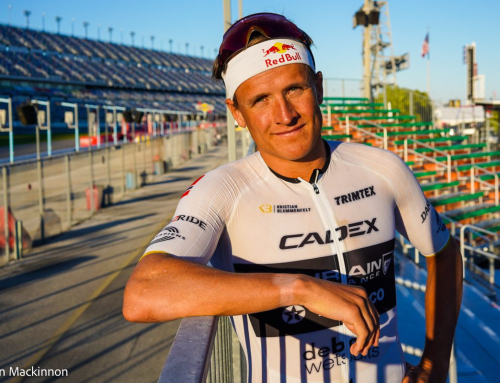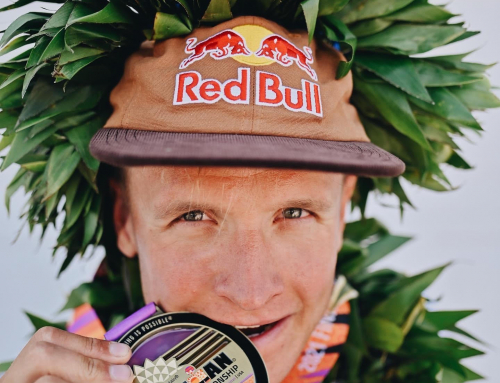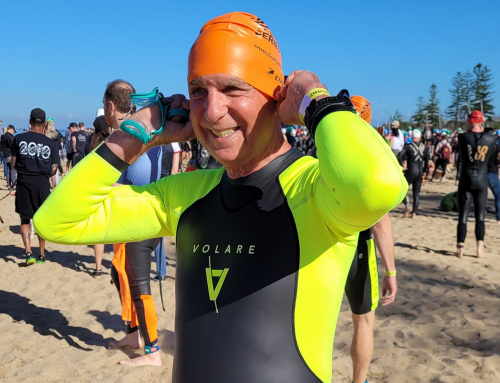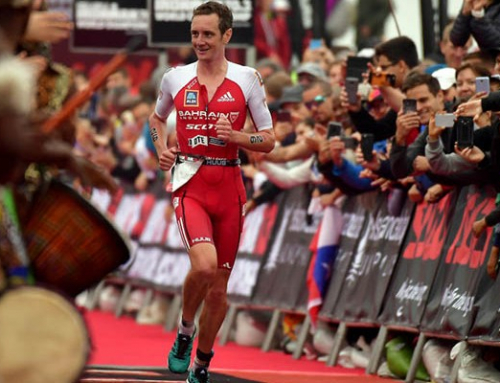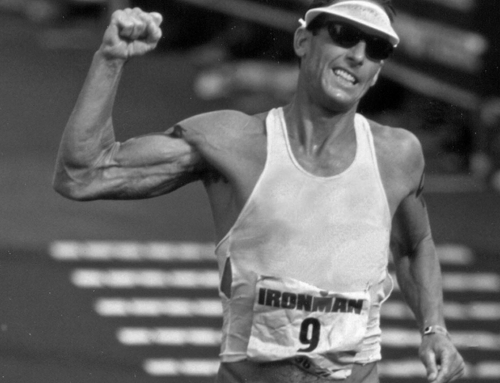WARM UP & RACE DETAILS
As we enter summer & race season check out GPC’s advice on how to make sure you are organised and ready for your first race of the season.
By now you should have transition complete and be ready to do your warm up.
Transition to Race Start:
- Return to the team tent or place bag in compound
- Complete run warm up (usually 15-20mins easy jog with a few accelerating sprints)
- This is usually the best time to scout out a public toilet that doesn’t have a massive line
- Return to bag compound/tent
- With 30mins to race start consume some water + electrolyte and one gel with caffeine
- Get into your wetsuit, making sure to use plenty of lubrication around the neck, shoulders and ankles
- Take your coloured swim cap, goggles, check your timing chip is on & return bag to tent or bag compound
- Move out of the compound so you are ready for the pre-race briefing with plenty of time to spare.
- Head down to the race start to complete your swim warm up
For a guide to planning out race day, check out the Coaches corner on race day schedule here.
Swim:
- Position yourself at the front of the pack on the start line if you are a fast swimmer. If less confident, move toward the back.
- Note where other swimmers are entering the water or positioning themselves in the waves prior to you to check for any holes/deeper water
- Run into the water as far as possible, then dolphin as far as possible
- If a deep water start, tread water & use a big breaststroke or scissor kick to propel you forward
- Start slightly faster than your desired pace to get into clear water to avoid bashing into other athletes
- Sight every 4-6 strokes and jump on the feet of a swimmer of similar speed or slightly faster than you
- Stay calm & don’t panic if you get hit. Slowly exhale in the water and regain normal breathing patterns. Even if it means rolling onto your back briefly or doing a couple of breaststrokes
- Toward the end of the swim, kick your legs more to get the blood flow preparing you for the run to transition
- Do not stand up until you can grab the sand or matting to exit the water
Swim to Bike Transition:
- Stay calm in your transition, there is no need to get flustered, sometimes gear gets moved and knocked or someone drops a wetsuit on your gear. If you stay calm you are much more likely to find it and have a smooth transition.
- A good transition takes a lot of practice and time to master, use the tips and tricks and practice, practice, practice.
- Know where your bike is in relation to the number of bike racks from the start or from a sign or tree that stands out, and the number of bikes from the end of your rack.
- Competitors try to do this as quickly as possible, taking off a wet suit and racing in bathers. Always clip on your helmet before taking your bike out.
- Jog or walk your bike to the bike exit where, once your bike is on the road, there is a mount sign indicating you can get on your bike. Take care of other competitors.
Bike:
- Only take your bike off the rack when your helmet is on
- If you stay on the right side of the road for too long or take to long to pass you may receive a penalty for “blocking”
- Stay at least 7m behind the rider in front of you to avoid a drafting penalty
- Only take your bike off the rack once your helmet is fastened or you will be disqualified. Safety is paramount in triathlons.
- Put on your shoes whether it is runners or bike shoes. Your bike should be in an easy gear, your pedals are flat so they won’t drag, run your bike out to the mount line and jump on. There are many ways of doing this but they need to be shown and practiced
- Change up to a more comfortable gear and maintain a rhythm. This is done by keeping your pedalling strokes spinning 80 to100 rpm (pretty quick pedal rotations, with not too much resistance). As you get around the course you want to keep your speed consistent. This is why spinning is important.
- Drink small sips of water – this is essential especially in preparation for your run.
- Keep your line – make sure you ride straight and try not to break suddenly in case there is anyone too close to you.
- Maintain a safe and legal space between other competitors – No Drafting.
- If it is windy just imaging cutting through the wind and change your bike gear to an easier one, so you can keep up your spinning speed. This is the same as if you ride up a hill.
- On windy days or hilly courses, pick the right equipment. Tri spoke and a disc wheel might not make your ride the safest and most comfortable.
- Tri bars are useful for the more experienced triathlete as it will give you more aerodynamics.
- Take the corners carefully and keep your inside pedal up (away from the ground) as you go around the corner. Drop down to a lower gear before the turn and accelerate as you come out of the corner to maintain your pace.
- When coming to the end of your cycle you need to stretch out a little standing up while riding if confident, or most importantly spin a little faster will help loosen up the legs and reduce some of the burning feeling you might be feeling. You don’t want to slow down until the last few hundred meters.
- At the end of the cycle undo your shoes in the last 500 meters if you are wearing bike shoes that you will leave on the bike. It takes a lot of practice to put on and take off your shoes safely and at speed so assure you practice and stay calm don’t attempt it in a race if you haven’t done it before. Some tips when you do: undo Velcro straps one foot at a time, pull one foot out of the shoe and place it on top of the shoe, then the other foot. Make sure you are looking up so you can see where you are going. Ensure both feet are out of the shoes before you attempt your dismount. The dismount is complex and also needs to be practiced before doing it in a race. You need to be very careful and assure you slow down adequately while learning. Again a group transition session is very helpful to get tips and practice this.
- Those wearing runners or bike shoes that haven’t practiced taking off just slow down ready to dismount at the dismount line.
- Keep your helmet fastened until your bike is racked back where you began.
- Rack your bike, take off your helmet, put on your shoes if not already on, grab your hat and go.
Bike to Run Transition:
- Return bike to your rack before taking off your helmet, put on running shoes and run to the run exit.
- A sign clearly marks the run exit but if you are ever confused please ask a transition official.
Run:
- If a warm day be sure to grab some water out on the course
- This is usually the best time to figure out your position in the race or competitors to try and catch
- Stick to race plan from your coach focusing on technique and cadence as you will be fatigued
- Gradually build your speed if possible to finish strong
- As you cross the finish line salute to your fans, take a bow, smile and then collapse in a heap in the recovery area
Well done on completing your race. Enjoy a delicious post race meal, reflect on your performance and make a plan on what you can improve for next time.
See Part 1 Here, and Part 2 Here…



